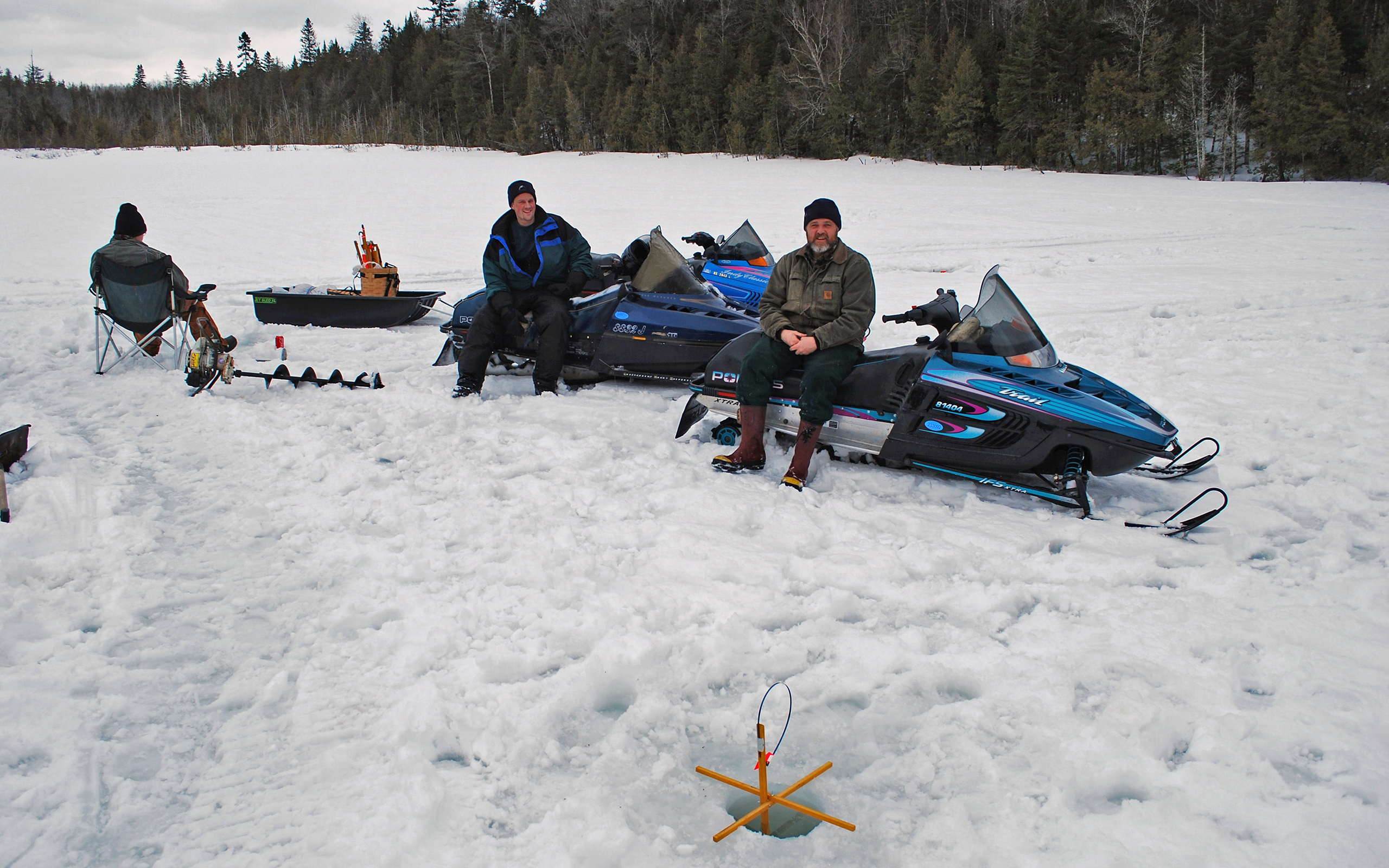
In early December I received an email from a stranger and a phone call from an old friend. Oddly, they each had pretty much the same question: What are the basic needs to venture out in northern Maine for a safe, comfortable and productive ice fishing trip? Both fathers were visiting relatives for the holidays from warmer southern states, and wanted to take their family out to experience a true Aroostook winter pastime.
Lots of rookies, resident locals and traveling visitors venture into “hard water” angling each winter. Some fall in love with the unique style of fishing, while for many, the frigid environment and often slow action leads to a “one and done” experience. Over the years I’ve fielded the “How do I get started?” question from dozens of potential ice fishing enthusiasts. My initial response is: find a relative or friend who has all the gear and finagle an invitation.
In reality, it is a good idea to accompany a well-equipped and experienced winter fisherman for a trip or two and find out if this cold-weather sport is going to become a regular pastime before spending money on your own gear. If the answer is yes, then the very first thing a rookie winter angler needs is ice thick enough on a favorite lake to safely support two or three sportsmen. That leads us to purchasing you first piece of equipment — something to check ice thickness and create fishing holes.
You’ll need either an ice chisel, manual auger or motorized auger. Prices vary inversely to the amount of work needed to create the hole and time spent. A gas auger can drill 10 holes in the time spent punching one hole with muscle power, but on the plus side, an ice chisel and manual auger don’t require gas or oil and won’t break down.
Over the last couple of years, battery-operated augers have surged into the limelight. I was skeptical at first about their power and efficiency, but these new models are amazing and require fewer accessories and less maintenance. How often you plan to fish and how many companions need holes drilled each outing will be deciding factors.

Tip-ups, also called traps, are the basis of ice fishing. There are multiple models to be purchased so select a sturdy, simple-to-use style and pay a bit more for equipment that will last for years. (Courtesy of Bill Graves)
The next necessity and perhaps the most important equipment are a set of tip-ups, also called traps. Even if you are invited to join a fishing partner or a group, and they have an ice auger, you should own your own tip-ups and have them rigged and ready to use. Let me warn you right up front: you get what you pay for, and it’s far better to own five really sturdy, easy-to-deploy traps that are a bit costly than a dozen cheap ones.
Check into tip-ups by Frabill. I like the bright orange models because they are hard to lose and easy to set out and see. Heritage also makes a sturdy trap, flag and reel outfit and Polar manufactures an HT Therm Extreme, a round trap that actually fits over and covers the hole to keep snow out to prevent freeze-up. Another heavy duty option built right here in Maine is the Jack Trap. They are simple to set up in the coldest weather and will handle even the largest quarry, such as muskie. Finally look over Maxtraps, also made in Maine and constructed for heavy use in the worst weather conditions.
Plan to spend $35 to $60 for a decent tip-up that will function for many winters, regardless of how wet and cold the conditions. Some companies even offer combo kits that include a set of tip-ups, a carry sack or pack basket and even special covers for storage or travel.
Every ice angler will need some sort of container to transport their tip-ups and extras such as hooks, sinkers, replacement lines, depth sounder, minnow net and other paraphernalia. It can be as simple as a five-gallon plastic bucket or a pack basket with waterproof cover and carry harness.

Writer Bill Graves uses a packbasket to simplify transport of ice fishing gear and keep everything together, and before each season he inspects and repairs any problems. (Courtesy of Bill Graves)
A long-handled ice scoop is a must. Most ice drillers have a backup since they tend to disappear down ice holes due to cold fingers, icy handles and thick gloves. Sportsmen learn quickly how important a wrist strap safety string on ice scoops and chisels can be. A heavy duty but lightweight plastic tote sled saves a lot of time and effort. Eagle Claws’ Shappell jet sleds offer multiple size and color options, will haul by hand or hook to a snowmobile or ATV and can haul game animals, hunting gear and people, as well as lots of ice fishing equipment.
A small compartmented tackle box for extra line, leader material, sinkers, hooks, jigs and lures, a live bait pail and bait net, knife, multitool and layers of warm clothes ought to round out your stockpile of essential ice fishing gear. If you really get serious about the sport, a snowmobile and portable ice fishing shelter may be added. See? I told you it was better to find a friend who’s already geared up.
There are flea markets, yard sales, garage sales and lots of buy, swap and sell books with plenty of secondhand or new ice fishing equipment listed. As much as it pains me to remind everyone, there’s lots of winter remaining. Plenty of lakes and ponds to explore lay near most towns and villages in Aroostook, so load up, head out, have fun and be safe.







